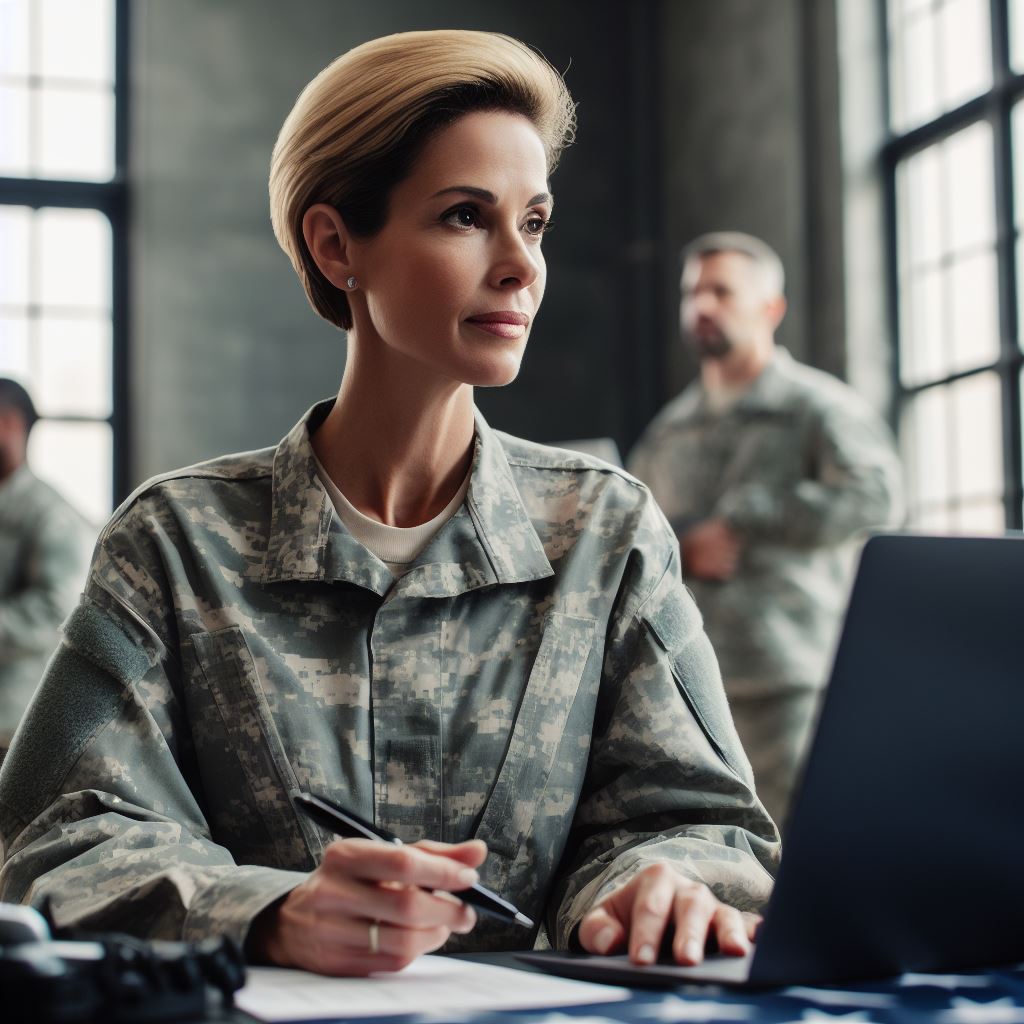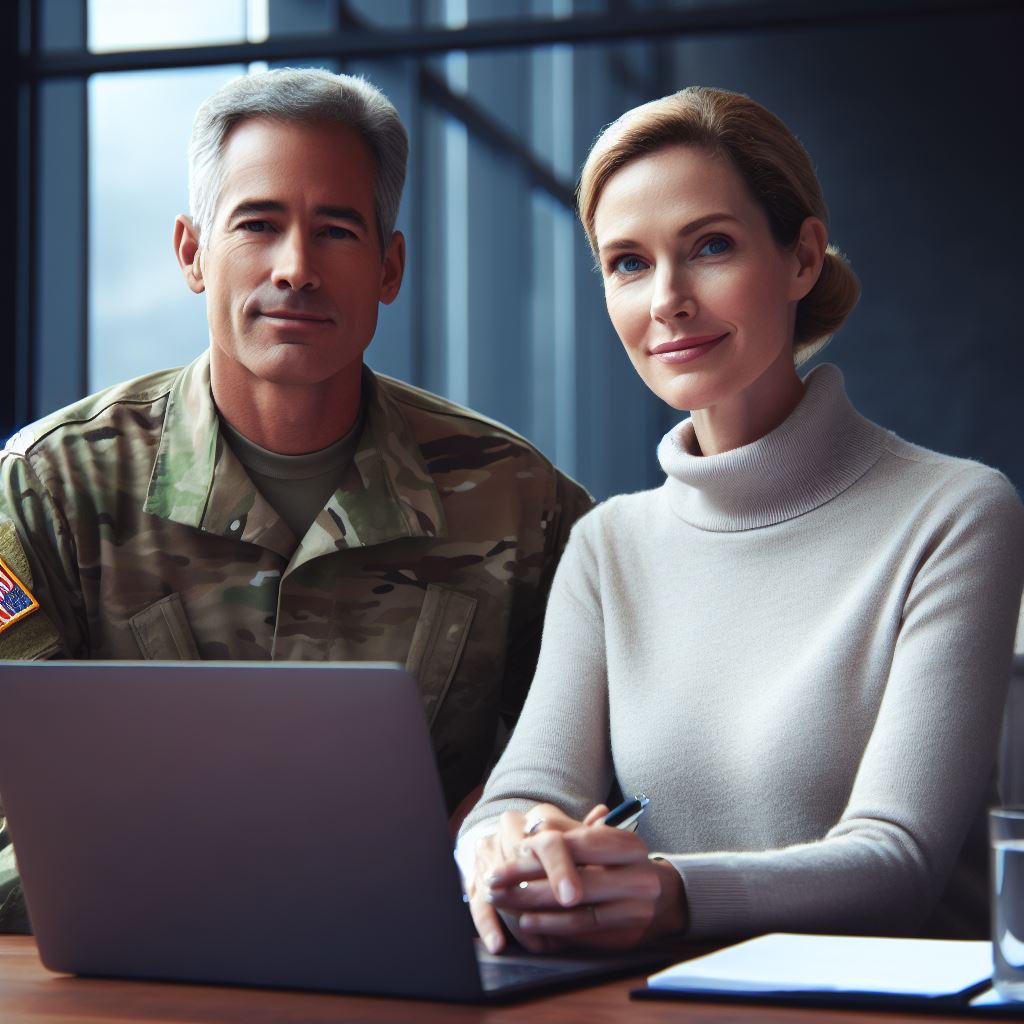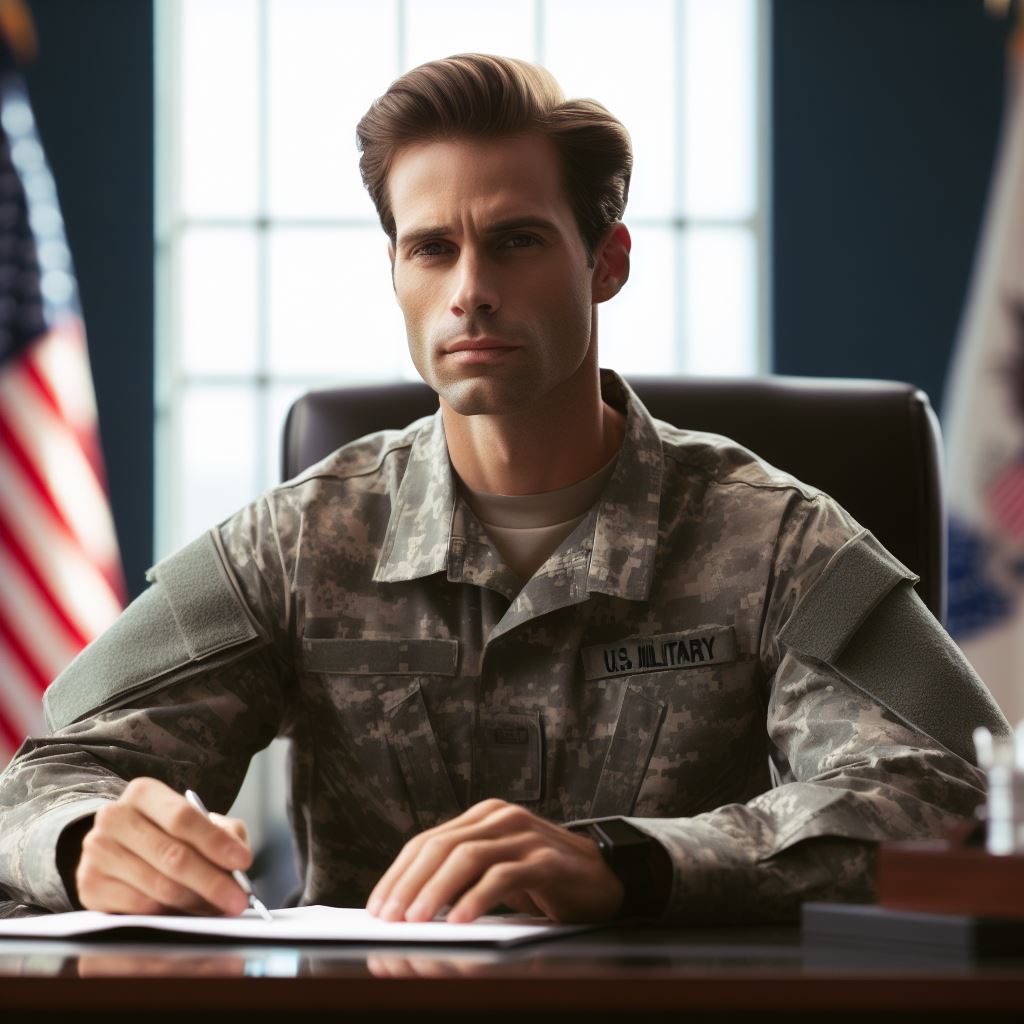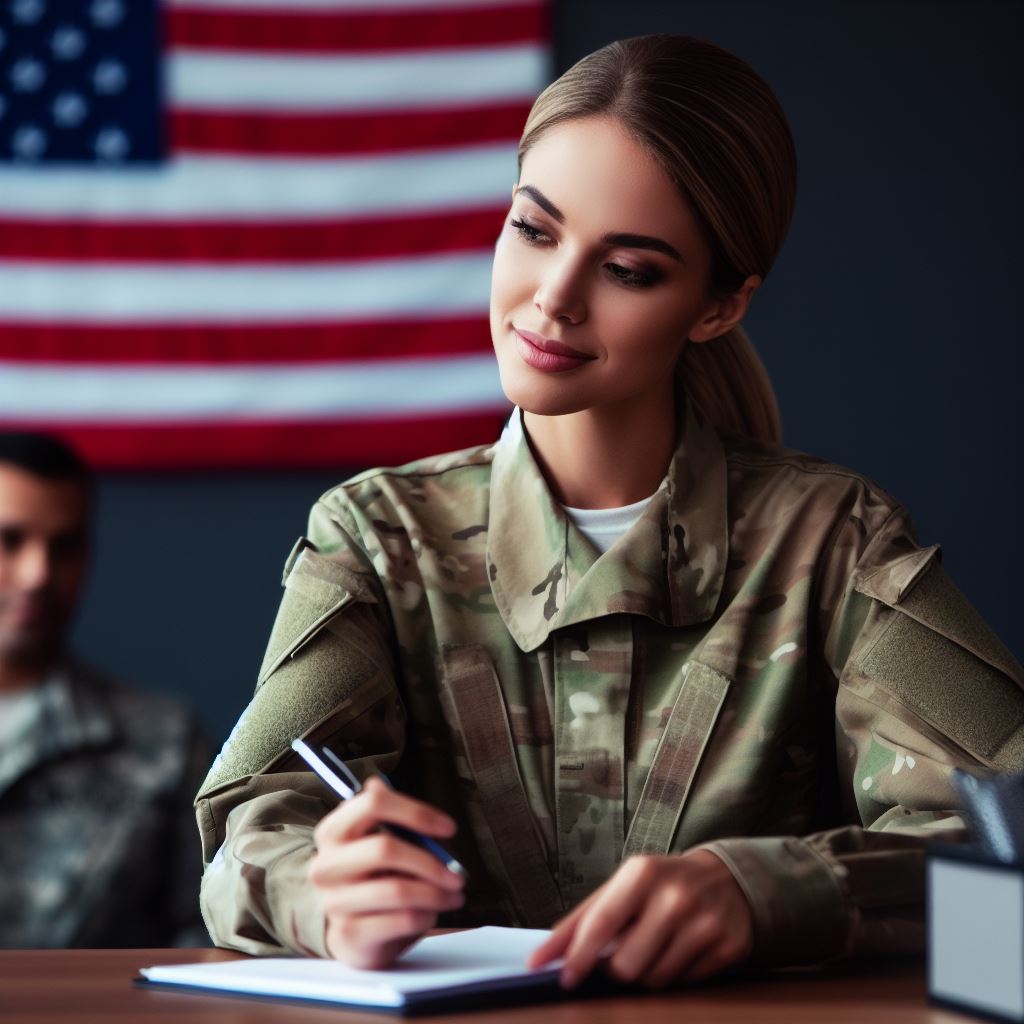Introduction
Delving into the heart of our discussion is the exploration of training rigor, a fundamental pillar in military readiness.
Importance of Training Rigor
In the following section, we unravel the significance of training rigor, not only in combat scenarios but also in the complex landscape of peacekeeping operations.
The intensity of training molds individuals, honing their skills and resilience to face diverse challenges.
It’s not merely a preparatory phase but a transformative journey, equipping professionals to navigate the demands of both conflict and peace.
Join us in understanding how the crucible of training becomes the catalyst for proficiency, adaptability, and success in the dynamic realms of combat and peacekeeping.
The blog post doesn’t just scratch the surface; it delves deep into the core, shedding light on the indispensable role training rigor plays in shaping effective military and peacekeeping personnel.
Importance of Physical Fitness
Physical fitness plays a crucial role in combat and peacekeeping operations. Understanding the physical demands of these situations is essential in order to effectively prepare and respond to challenges.
Furthermore, being physically fit offers numerous benefits beyond the battlefield or peacekeeping missions.
In this blog section, we will explore the importance of physical fitness and highlight different training methods that can help enhance one’s physical capabilities.
Explanation of Physical Demands in Combat and Peacekeeping
Combat and peacekeeping operations require individuals to endure physically demanding tasks.
Soldiers and peacekeepers often face situations that demand strength, agility, and endurance.
Whether it is carrying heavy equipment, engaging in intense physical combat, or enduring long missions with minimal rest, physical fitness becomes a vital component for success.
In combat scenarios, soldiers need to be able to perform at peak levels to overcome obstacles, engage in close combat, and carry out various mission objectives.
This demands physical stamina, as battles can often last for extended periods, requiring soldiers to be on their feet, moving, and exerting themselves both mentally and physically.
Similarly, peacekeepers face physically demanding challenges such as maintaining order, providing humanitarian aid, and responding to security threats.
These tasks can involve duties like patrolling on foot, carrying heavy loads, and performing physically taxing activities in challenging environments.
Therefore, being physically fit is crucial for peacekeepers to effectively carry out their duties and maintain a safe and secure environment.
Benefits of Being Physically Fit
Achieving and maintaining physical fitness goes beyond meeting the demands of combat and peacekeeping.
It offers numerous benefits that contribute to overall well-being and performance.
Some of these benefits include:
- Improved overall health and reduced risk of chronic diseases
- Increased energy levels and endurance
- Enhanced mental focus and clarity
- Improved resilience and stress management
- Reduced risk of injuries
- Enhanced self-confidence and self-esteem
Regular physical activity and exercise have been proven to improve cardiovascular health, strengthen the immune system, and decrease the risk of conditions like heart disease, obesity, and diabetes.
Furthermore, being physically fit allows individuals to perform daily tasks more efficiently and effectively, both in and out of combat or peacekeeping scenarios.
In addition to physical benefits, exercise also positively impacts mental health.
Engaging in regular physical activity releases endorphins, which boost mood, reduce stress, and improve mental well-being.
This, in turn, enhances mental focus, clarity, and cognitive abilities, all of which are crucial for making split-second decisions in combat or peacekeeping situations.
Furthermore, physical fitness plays a significant role in injury prevention.
Strengthening muscles, improving flexibility, and correcting imbalances through structured training regimes reduce the risk of common injuries.
This ensures that soldiers and peacekeepers can perform their duties without hindrance and decreases the likelihood of medical disqualification.
Training Methods to Enhance Physical Fitness
Various training methods can be employed to enhance physical fitness and meet the demands of combat and peacekeeping effectively. These methods include:
- Cardiovascular training: Engaging in activities like running, swimming, or cycling to improve cardiovascular endurance.
- Strength training: Utilizing resistance exercises such as weightlifting or bodyweight exercises to build strength and muscle mass.
- Flexibility exercises: Incorporating activities like stretching or yoga to enhance flexibility and joint mobility.
- Functional training: Performing exercises that mimic real-world movements and tasks encountered in combat and peacekeeping scenarios.
Combining these various training methods allows individuals to develop a well-rounded, overall physical fitness level.
It is important to focus on a comprehensive approach that addresses cardiovascular endurance, muscular strength, flexibility, and functional movements to meet the demands of combat or peacekeeping.
Basically, physical fitness is of utmost importance for individuals preparing for combat and peacekeeping.
Understanding the physical demands, reaping the benefits, and implementing training methods can significantly enhance one’s preparedness, performance, and overall well-being in these challenging situations.
Prioritizing physical fitness is crucial for success and ensuring the safety of oneself and others in combat and peacekeeping operations.
Mental Preparedness
Emphasis on Mental Strength in Combat and Peacekeeping
In the realm of combat and peacekeeping, mental strength plays a crucial role.
Our soldiers and peacekeepers require not only physical prowess but also a resilient mindset to navigate the challenges they face.
To ensure our personnel are mentally prepared for the demanding nature of their duties, training programs must prioritize the development of mental strength.
This encompasses various aspects, such as psychological resilience and emotional stability.
Strategies to Enhance Mental Preparedness
Mindfulness Training
Incorporating mindfulness techniques into training programs can significantly enhance mental preparedness.
Mindfulness enables individuals to focus their attention on the present moment, reducing distractions and promoting mental clarity.
Visualization Exercises
Engaging in visualization exercises helps individuals mentally rehearse challenging scenarios they may encounter during combat or peacekeeping missions.
By visualizing success and overcoming obstacles, soldiers can boost their confidence and adaptability.
Psychological Resilience Training
Resilience is a critical trait for soldiers and peacekeepers.
Training programs should include modules that teach individuals how to cope with setbacks, stress, and trauma.
By fostering resilience, personnel can bounce back from adversity and continue performing their duties effectively.
Strategic Decision-Making Exercises
Combat and peacekeeping often demand quick and effective decision-making skills.
Training should include exercises that simulate real-life scenarios, requiring individuals to make strategic decisions under pressure.
This hones cognitive abilities and equips personnel to make informed choices in critical situations
Transform Your Career Today
Unlock a personalized career strategy that drives real results. Get tailored advice and a roadmap designed just for you.
Start NowImportance of Stress Management Techniques
Breathing Techniques
Deep breathing exercises are effective stress management tools. By focusing on slow, deep breaths, individuals can activate the relaxation response, reducing anxiety and enhancing mental clarity.
Physical Exercise
Regular physical exercise has been proven to reduce stress levels.
Incorporating fitness routines into training programs not only improves physical fitness but also provides an outlet for stress and boosts overall well-being.
Support Networks
Encouraging soldiers and peacekeepers to build strong support networks is vital for their mental preparedness.
Having trusted individuals to confide in and seek advice or assistance from can alleviate stress and provide a sense of belonging.
Mental Health Resources
Promoting access to mental health resources is crucial. Personnel should be educated about the available support services, such as counseling and therapy, ensuring they know where to turn for assistance if needed.
By prioritizing mental preparedness and incorporating strategies to enhance mental strength, our soldiers and peacekeepers can perform at their best, both in combat and peacekeeping missions.
The importance of stress management techniques cannot be overstated in maintaining their overall well-being.
Ultimately, mental preparedness is a significant aspect of training rigor for combat and peacekeeping. It is not enough to focus solely on physical abilities; a resilient mindset is equally important.
Emphasize mental strength, incorporate strategies for preparedness, and promote stress management to equip personnel with essential tools for challenges.
Weapons Training
Significance of proper weapons training in combat and peacekeeping
Proper weapons training plays a crucial role in the success of both combat and peacekeeping missions.
It prepares individuals to effectively handle various weapons, ensuring their safety and the safety of those around them.
One of the primary reasons why proper weapons training is significant in combat and peacekeeping is because it enhances the combatant’s ability to protect themselves and others.
This training equips them with the necessary skills to effectively handle different types of weapons and engage in combat situations.
Overview of different types of weapons training
There are various types of weapons training that individuals undergo to develop their proficiency.
These include firearms training, melee combat training, explosive ordnance disposal training, and tactical weapons training.
Each type of training focuses on building specific skills required in different situations.
Firearms training, for instance, concentrates on teaching individuals how to handle and fire various firearms accurately.
It covers aspects such as marksmanship, target acquisition, and reloading under pressure.
Melee combat training, on the other hand, focuses on close-quarters combat techniques, including hand-to-hand combat and the use of bladed weapons.
Explosive ordnance disposal training is essential for those who handle or encounter explosive devices.
It educates individuals on how to safely identify, disarm, and dispose of explosives in order to prevent accidents and casualties.
Tactical weapons training, meanwhile, emphasizes team coordination and communication in combat scenarios, effectively utilizing weapons to achieve mission objectives.
Importance of safety protocols during weapons training
During weapons training, safety protocols play a vital role in ensuring the well-being of everyone involved.
These protocols encompass strict rules and guidelines that must be adhered to in order to minimize the risk of accidents and injuries.
One essential safety protocol is the proper handling and storage of weapons.
Firearm safety rules, for example, dictate always treating weapons as if they are loaded, pointing them in a safe direction, and keeping fingers off the trigger until ready to fire.
Safety protocols also emphasize regular maintenance and inspection of weapons to ensure their functionality and reliability.
Additionally, safety measures during weapons training include wearing appropriate protective gear such as safety goggles, ear protection, and bulletproof vests.
This protective equipment helps minimize the risk of injury during training exercises, shielding individuals from potential harm.
Furthermore, strict supervision and monitoring are crucial aspects of implementing safety protocols during weapons training.
Trained instructors closely supervise trainees to ensure they follow safety procedures, providing immediate guidance and correction when necessary.
Overall, proper weapons training holds great significance in combat and peacekeeping arenas.
It equips individuals with essential skills, improving their ability to protect and serve.
Through various types of training, individuals gain proficiency in handling different weapons, enabling them to adapt to diverse combat scenarios.
Adhering to safety protocols ensures the well-being of all involved, minimizing accidents and injuries.
By prioritizing weapons training and safety, organizations can enhance the effectiveness and professionalism of their personnel in combat and peacekeeping missions.
Tactical Training
Explanation of tactical skills required in combat and peacekeeping
Tactical training plays a crucial role in preparing individuals for combat and peacekeeping operations.
By developing and honing tactical skills, trainees become proficient in handling various challenges they may encounter in the field.
During tactical training, participants are exposed to different scenarios that require them to employ their skills effectively and make informed decisions.
This training not only strengthens individuals’ capabilities but also boosts their confidence in high-pressure situations.
Types of tactical training exercises
Various types of training exercises are utilized to enhance tactical skills.
Urban warfare simulations provide a realistic environment to practice techniques such as room clearing and close-quarters combat.
Live-fire drills offer hands-on experience with weapons and teach trainees how to handle them safely and accurately.
Mock peacekeeping missions recreate scenarios where trainees must navigate complex political landscapes, respect local customs, and resolve conflicts peacefully.
These exercises replicate the challenges often faced in international peacekeeping operations and prepare individuals to handle them effectively.
Transform Your Career Today
Unlock a personalized career strategy that drives real results. Get tailored advice and a roadmap designed just for you.
Start NowRole of teamwork and communication in tactical training
Teamwork and effective communication are emphasized throughout tactical training.
Soldiers and peacekeepers must learn to trust and rely on their teammates, understanding that their actions directly impact the success of the mission.
By working together, trainees develop synergy, enabling them to overcome obstacles efficiently.
During training, communication channels are established to ensure timely transmission of crucial information.
This includes radio communication, hand signals, and situational reporting.
Through well-established communication, individuals remain updated on the situation, maintain situational awareness, and prevent misunderstandings or errors that can jeopardize mission success.
Overall, the rigorous nature of tactical training instills critical skills and mindset required for combat and peacekeeping.
Mastering tactical skills, soldiers and peacekeepers prepare to face missions. Effective teamwork and communication ensure optimal performance in diverse environments.
Read: A Day in the Life of a U.S. Army Soldier: Real Stories
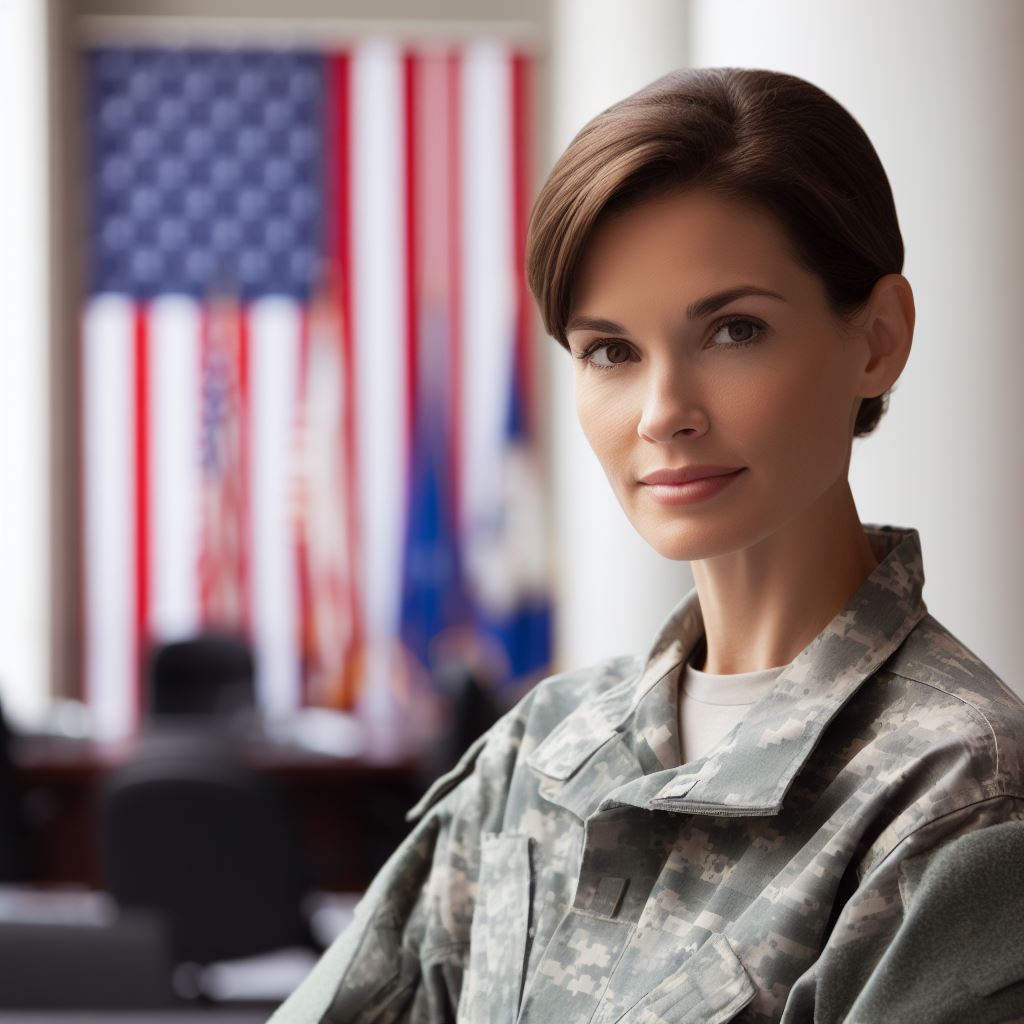
Scenario-based Training
Importance of realistic scenario-based training
- Realistic scenario-based training is crucial for preparing individuals for the challenges they may face.
- It helps to simulate real-life combat and peacekeeping situations, making training more effective.
- Through scenarios, trainees learn to respond quickly and adapt to unpredictable circumstances.
- It provides practical experience that enhances decision-making abilities in high-pressure environments.
- Scenario-based training instills confidence, enabling trainees to perform better in real-life situations.
Scenario-based training plays a vital role in shaping individuals to become effective combat and peacekeeping professionals.
By offering a realistic environment that mirrors real-life scenarios, this type of training prepares individuals for the challenges they may encounter in the field.
Examples of scenario-based training exercises
- Urban warfare simulation: Trainees navigate through a mock city, dealing with various threats and challenges.
- Roadside bomb detection exercise: Trainees learn to identify and handle improvised explosive devices.
- Hostage rescue scenario: Trainees practice coordinating efforts to safely rescue hostages from a simulated environment.
- Peacekeeping negotiation simulation: Trainees engage in role-play exercises to enhance conflict resolution skills.
- Ambush response drill: Trainees experience sudden attacks and learn to react swiftly and effectively.
Realistic scenario-based training goes beyond traditional classroom instruction or theoretical learning.
It immerses trainees in simulated combat or peacekeeping situations, requiring them to apply their skills and knowledge in practical scenarios.
These training exercises provide trainees with a taste of what they may face in real-life situations.
Simulating combat and peacekeeping scenarios exposes individuals to pressure, uncertainty, and complexity. This cultivates skills and mindset for effective handling.
Advantages of simulating real-life combat and peacekeeping situations
- Improved decision-making: Trainees develop the ability to think critically and make strategic choices under pressure.
- Enhanced situational awareness: Simulations help trainees recognize threats and evaluate the best course of action.
- Effective communication: Crisis scenarios promote teamwork, coordination, and clear communication among trainees.
- Emotional preparation: Realistic training prepares individuals for the mental and emotional challenges they may encounter.
- Mistake learning: Scenarios provide a safe environment for trainees to learn from mistakes and improve their skills.
Scenario-based training, vital for decision-making improvement, challenges trainees to think critically, adapt to changing circumstances, and act decisively.
This cultivates competence in assessing risks and evaluating options, especially under high-pressure situations.
The training extends beyond decision-making, enhancing situational awareness crucial in combat and peacekeeping.
Immersed in realistic scenarios, trainees learn to identify threats and evaluate environments, developing the ability to anticipate and mitigate risks effectively.
Furthermore, scenario-based training positively impacts communication and teamwork.
In simulated scenarios, trainees must work together, coordinating efforts and communicating clearly to achieve objectives.
These exercises foster effective teamwork, strengthen coordination skills, and improve communication—critical elements in combat and peacekeeping missions.
Beyond technical skills, the training prepares individuals for emotional and psychological challenges in real-life operations.
Exposure to simulated combat or peacekeeping situations helps trainees manage stress, fear, and intense emotions, contributing to resilience.
Lastly, scenario-based training offers a controlled environment for learning from mistakes.
Trainees, through simulated scenarios, assess their performance, identify areas for improvement, and refine their skills iteratively.
This iterative learning process develops competence and confidence, better preparing individuals for actual combat or peacekeeping situations.
All in all, scenario-based training is invaluable for combat and peacekeeping preparation, offering advantages such as improved decision-making, enhanced situational awareness.
Effective communication, emotional resilience, and learning from mistakes.
This practical experience in a simulated environment equips individuals with the necessary skills and mindset for success in dynamic situations.
Read: Balancing Vigilance and Courtesy: A U.S. Security Guard Challenge
Gain More Insights: Wildfire Frontlines: A Day in the Life of a Hotshot
Physical Endurance Training
Explanation of the Physical Endurance Demands in Combat and Peacekeeping
- Combat and peacekeeping require soldiers to endure physically demanding tasks.
- These demands include long periods of physical exertion, carrying heavy equipment, and operating in challenging environments.
- Soldiers must be able to push through fatigue, withstand extreme weather conditions, and maintain their physical performance.
- Physical endurance is crucial for soldiers to effectively carry out their duties and missions in combat and peacekeeping operations.
Training methods to Enhance Physical Endurance
- High-intensity interval training (HIIT) can improve cardiovascular fitness and endurance.
- Interval running, cycling, and swimming are effective HIIT exercises that can be incorporated into training programs.
- Strength training helps build muscular endurance and prepares soldiers for repetitive and prolonged tasks.
- Circuit training, using bodyweight exercises or equipment, can enhance overall endurance and improve functional performance.
- Cross-training, such as participating in different sports or activities, can diversify training and improve overall fitness levels.
- Focusing on specific endurance activities, such as long-distance running or rucking, can directly target the demands of combat and peacekeeping.
Importance of Building Stamina for Prolonged Missions
- Prolonged missions can require soldiers to operate for extended periods without rest or resupply.
- Building stamina enables soldiers to maintain performance levels and mental focus during these missions.
- Endurance training also promotes resilience, allowing soldiers to recover quickly from physical and mental stress.
- Improved stamina reduces the risk of injuries, as fatigued soldiers are more prone to accidents and mistakes.
- Stamina is crucial for maintaining situational awareness and decision-making abilities in high-pressure situations.
- Soldiers with high levels of stamina can better support their teammates and contribute effectively to mission success.
In a nutshell, physical endurance training is essential for soldiers in combat and peacekeeping operations.
Understanding the demands of these roles, implementing various training methods, and building stamina are critical for soldiers to perform their duties effectively.
By prioritizing physical endurance, soldiers can enhance their overall fitness levels, withstand the challenges of prolonged missions, and contribute to the success of their teams.
Read: Veterans Transitioning to Security Roles: A Guide for the U.S. Market
Cultural Sensitivity Training
Importance of cultural sensitivity in peacekeeping operations
- Cultural sensitivity is crucial for peacekeepers to understand and respect local customs.
- It helps prevent misunderstandings, conflicts, and negative perceptions by the local population.
- Having cultural awareness fosters trust, cooperation, and effective communication between peacekeepers and locals.
Cultural sensitivity training plays a vital role in peacekeeping operations.
It equips peacekeepers with the necessary knowledge and skills to understand and respect the customs and traditions of the local population they are serving.
Without cultural sensitivity, misunderstandings and conflicts can arise, hindering the overall mission effectiveness.
Developing cultural awareness is a continuous process that peacekeepers must actively engage in.
By immersing themselves in the local community, peacekeepers can gain valuable insights into the customs and values of the host country.
Interacting with residents and participating in cultural events allows them to experience firsthand the local way of life.
Language training is another essential aspect of cultural sensitivity.
Effective communication is the key to building relationships and understanding local perspectives.
Learning the language of the host country not only facilitates communication but also demonstrates a genuine effort to connect with the local population on a deeper level.
Studying the history, religion, traditions, and values of the host country is essential in developing cultural sensitivity.
This knowledge provides peacekeepers with a foundation to understand the context in which they are operating.
It helps them avoid cultural misinterpretations and shows respect for the local culture.
Strategies to develop cultural awareness and understand local customs
- Immersing in the local community through interactions with residents and participating in cultural events.
- Engaging in language training to improve communication skills and build relationships.
- Studying the history, religion, traditions, and values of the host country to gain better understanding.
- Utilizing cultural advisors or interpreters to navigate cultural nuances and customs effectively.
- Encouraging dialogue and collaboration between peacekeepers from different cultures to exchange experiences.
Having access to cultural advisors or interpreters can significantly aid peacekeepers in navigating cultural nuances and customs.
These individuals are invaluable resources who can provide insights into unfamiliar practices and behaviors, ensuring the peacekeepers act appropriately and respectfully.
Promoting dialogue and collaboration among peacekeepers from different cultures is also crucial.
By sharing their experiences and perspectives, peacekeepers can further develop their cultural sensitivity and understanding.
This exchange of knowledge fosters an environment of learning and mutual respect within peacekeeping missions.
Transform Your Career Today
Unlock a personalized career strategy that drives real results. Get tailored advice and a roadmap designed just for you.
Start NowRead: Physical Fitness Standards and Tips for U.S. Security Guards
Benefits of effective cultural sensitivity training
- Enhanced ability to navigate challenging situations and adapt to unfamiliar environments.
- Improved crisis management and conflict resolution skills by understanding cultural perspectives.
- Greater effectiveness in establishing rapport, trust, and cooperation with local communities.
- Reduced risk of unintentionally offending or disrespecting local customs and traditions.
- Increased chances of successful mission outcomes by fostering positive relationships with the local population.
The benefits of effective cultural sensitivity training are numerous.
Peacekeepers who undergo such training demonstrate increased adaptability, enabling them to navigate complex and unfamiliar situations.
They possess better crisis management and conflict resolution skills by understanding cultural perspectives and sensitivities.
By being culturally sensitive, peacekeepers can establish rapport, trust, and cooperation with local communities.
This positive relationship-building is vital for the success of peacekeeping missions.
Peacekeepers who respect and embrace the local customs are more likely to gain the cooperation and support of the local population.
Effective cultural sensitivity training also minimizes the risk of unintentionally offending or disrespecting local customs and traditions.
Peacekeepers can avoid inadvertently violating cultural norms, allowing for smoother interactions and mutual understanding.
In closing, cultural sensitivity training is indispensable for peacekeeping operations.
It is necessary for peacekeepers to develop cultural awareness, understand local customs, and respect the traditions and values of the host country.
The benefits of effective cultural sensitivity training are far-reaching, ultimately contributing to the success and positive outcomes of peacekeeping missions.
Conclusion
The significance of training rigor in combat and peacekeeping cannot be overstated. It is crucial to prioritize rigorous training for the success of operations in the field.
In this section, we have explored the importance of training rigor in preparing for combat and peacekeeping missions.
Rigorous training is not just a luxury, but a necessity for those in the military and peacekeeping forces.
Throughout the section, we have delved into the various aspects of training rigor, from physical fitness to mental resilience.
We have seen how rigorous training can enhance physical stamina, improve tactical skills, and foster teamwork and camaraderie.
It is clear that training rigor plays a pivotal role in ensuring the safety and success of military operations.
It enables soldiers and peacekeepers to respond effectively to the challenges they may face in the field, whether it be in combat or peacekeeping missions.
Therefore, it is crucial for military organizations and peacekeeping forces to prioritize rigorous training.
This means allocating sufficient time, resources, and personnel to ensure that training programs are comprehensive and demanding.
By investing in rigorous training, military and peacekeeping organizations can enhance the readiness and capabilities of their personnel.
It will equip them with the skills, knowledge, and mindset needed to accomplish their missions with confidence and effectiveness.
To summary, training rigor is not an option but a necessity for those engaged in combat and peacekeeping operations.
It is a crucial component that ensures the safety, effectiveness, and success of missions in challenging and demanding environments.
Therefore, let us prioritize rigorous training and strive for excellence in our operations.
[E-Books for Sale]
The Big Book of 500 High-Paying Jobs in America: Unlock Your Earning Potential
$19.99 • 500 High-Paying Jobs • 330 pages
Explore 500 high-paying jobs in America and learn how to boost your career, earn more, and achieve success!
See All 500 High-Paying Jobs of this E-Book
1001 Professions Without a Degree: High-Paying American Jobs You Can Start Now
$19.99 • 1001 Professions Without a Degree • 174 pages
Discover 1001 high-paying jobs without a degree! Unlock career tips, skills, and success strategies for just $19.99!

